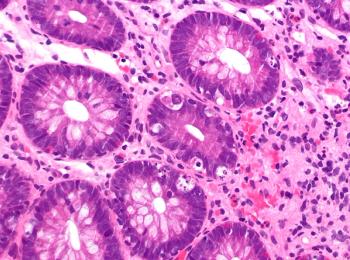
Transfusion Dependence in Some Leukemia Patients May Hinder Quality End-of-Life Care
Hospice use occurred more frequently among Medicare beneficiaries with acute and chronic leukemias who were transfusion dependent, according to the results of a study presented at the ASH Annual Meeting.
Hospice use occurred more frequently among Medicare beneficiaries with acute and chronic leukemias who were transfusion dependent, according to the results of a study (
“We found a significant association between transfusion dependence and less meaningful use of hospice care at the end of life among patients with leukemia,” said senior study author Thomas W. LeBlanc, MD, associate professor of medicine at Duke Cancer Institute in Durham, North Carolina.
LeBlanc and colleagues looked at 21,076 patients from the SEER–Medicare database aged 65 or older with acute and chronic leukemia diagnosed between 1996 and 2011. Patients were considered transfusion dependent if they required two or more transfusions within 30 days before death or hospice enrollment.
Twenty percent of patients were considered transfusion dependent. These patients were younger, more often male, and more often had acute leukemia.
Overall the use of hospice increased from 35% in 2001 to 49% in 2011, and was higher in patients who were transfusion dependent than among those who were not (47% vs 43%; P < .0001).
The median time on hospice was 9 days, and was significantly shorter for patients who were transfusion dependent (6 vs 11 days; P < .0001). Transfusion-dependent patients were also more likely to receive hospice care for less than 3 days (27% vs 19%; P < .0001).
Multivariable analysis showed that transfusion dependence was associated with a slightly higher likelihood of hospice enrollment, but with a 51% shorter time on hospice and a 38% higher risk for receiving hospice services for less than 3 days.
Those patients who were enrolled in hospice had a lower likelihood of inpatient death (3% vs 75%), chemotherapy use in the last 14 days of life (5% vs 16%), and lower median Medicare spending at end of life ($7,662 vs $17,783) than non-enrollees.
According to Dr. LeBlanc, one of the barriers to the use of hospice care by transfusion-dependent patients with advanced leukemia is that many clinicians consider blood transfusions to be disease-modifying therapy rather than comfort care, as transfusions can help some patients to live longer and feel better. Another is that, under Medicare’s reimbursement protocol, the cost of blood transfusions is not compensated separately, but must be covered within the per-diem rate paid for hospice care, reducing the ability of hospice agencies to provide transfusion support as part of their services. Furthermore, the logistical complexities of blood transfusion also often preclude providing the service in patients’ homes, where most hospice patients receive care.
“These findings suggest that patients are having to choose between getting the transfusions they need and getting high-quality end-of-life care,” Dr. LeBlanc said. “Our findings suggest that allowing reimbursement for palliative transfusions in patients with terminal leukemia would be beneficial for both patients and their families.”
Newsletter
Stay up to date on recent advances in the multidisciplinary approach to cancer.

















































































